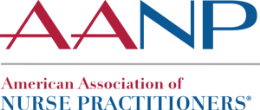Pulmonary and Respiratory

Continuing Education Courses
The AANP CE Center offers a wide variety of continuing education (CE) activities for nurse practitioners (NPs). Members of the American Association of Nurse Practitoiners® (AANP) get more, including access to many free activities and significantly discounted rates on others.
JAANP Resource Center
Find evidence-based articles, up-to-date guidelines and other pulmonology and respiratory resources at this resource center, brought to you by the Journal of the American Association of Nurse Practitioners (JAANP).
NP Tools and Resources
AANP-Developed Resources to Support NPs in Treating Your Patients
- Practice Brief: Global Strategy for the Diagnosis, Management and Prevention of COPD, Global Initiative for Chronic Obstructive Lung Disease (GOLD) 2020.
- Practice Brief: Sleep Disorder Management Diagnostic and Treatment Guidelines Summary.
Chronic Obstructive Pulmonary Disease (COPD) Clinical Resource Tool
NPs are essential to the early diagnosis and treatment of COPD. Whether facing a patient at risk for developing COPD or adjusting treatment for a patient with poorly controlled COPD symptoms, NPs in clinical practice must start this important conversation. AANP, in conjunction with expert NP faculty Susan Corbridge and Corinne Young, have developed this useful tool to help NPs discuss timely diagnosis, implement appropriate treatment according to current Global Initiative for Chronic Obstructive Lung Disease (GOLD) guidelines and adjust therapy for patients who are at increased risk due to infections, exacerbation or inadequate care.
This activity is supported by independent educational grants from Viatris and AstraZeneca, PLP.
Diagnosing and Managing Exocrine Pancreatic Insufficiency (EPI): The Role of the NP
EPI is a condition caused by damage to the pancreas that results in reduced capability to produce or deliver digestive enzymes which break down fats, carbohydrates or proteins — or to a decrease in the enzyme activity in the small intestine. EPI is most commonly associated with chronic pancreatitis (in adults), cystic fibrosis (in children), diabetes (both type 1 and type 2) and other etiologies such as acute pancreatitis, pancreatic cancer or resection, celiac and Crohn’s disease. Consequently, individuals with EPI may suffer malnutrition and fat-soluble vitamin deficiency; loss of bone mass; growth and immune deficiencies; and may experience poorer outcomes such as longer hospital stays and lower survival rates of underlying medical conditions secondary to malnutrition. This tool provides resources that include evaluation of symptoms and common high-risk conditions, diagnostic testing and management goals combining diet, lifestyle and therapies to reduce symptoms and improve quality of life.
This tool is sponsored by an independent grant from Ironwood Pharmaceuticals and Allergan, an AbbVie company.
Influenza Vaccination Tool for NPs
This provider tool is a resource for improving influenza prevention and facilitating confident conversations about vaccination. This tool can be printed and shared with office staff responsible for ordering or administering influenza vaccinations.
This tool is made possible by an independent educational grant from Seqirus.
Pneumococcal Vaccination Across the Lifespan Integrating Vaccine Recommendations
This informative handout for the NP provides a summary of the FDA-approved pneumococcal vaccines as well as the Advisory Committee on Immunization Practices (ACIP) recommendations for their use. Handy resources in this tool include QR codes that direct you to CDC information and the PneumoRecs VaxAdvisor clinical app which will help you make a quick and accurate determination as to which, if any, pneumococcal vaccination is appropriate for your patient.
This activity is supported by an independent educational grant from Merck & Co., Inc.
Strategies to Facilitate Smoking Cessation: Patient Scenarios
View this case scenario vignette video of an NP counseling a simulated patient regarding smoking cessation. Observe an interweaving of the "5 As," recommended by the Centers for Disease Control and Prevention (CDC), as well as motivational interviewing techniques.
AANP developed and produced this video through support from Pfizer Inc.
Smoking Cessation Videos: Advice From NPs
Hear from AANP members and expert NPs as you gain advice to help your patients quit smoking.
Patient Education Tools and Resources
Healthy Habits to Prevent Influenza Handout
This two-page patient handout discusses influenza prevention on page one and influenza treatment, including tips for taking antiviral medications, on page two. This handout can be printed and placed in waiting rooms and exam rooms or handed to patients to promote clinical discussions around influenza prevention and treatment.
Made possible by educational grants from Seqirus and Genentech, a member of the Roche group.
External Resources
Conveniently Curated Information From Other Top Sources
There are many resources available for both patients and providers. Some of them are listed below for your convenience. Inclusion of these links does not imply AANP endorsement.
Asthma
COPD
Sleep Apnea
Society of Anesthesia and Sleep Medicine

